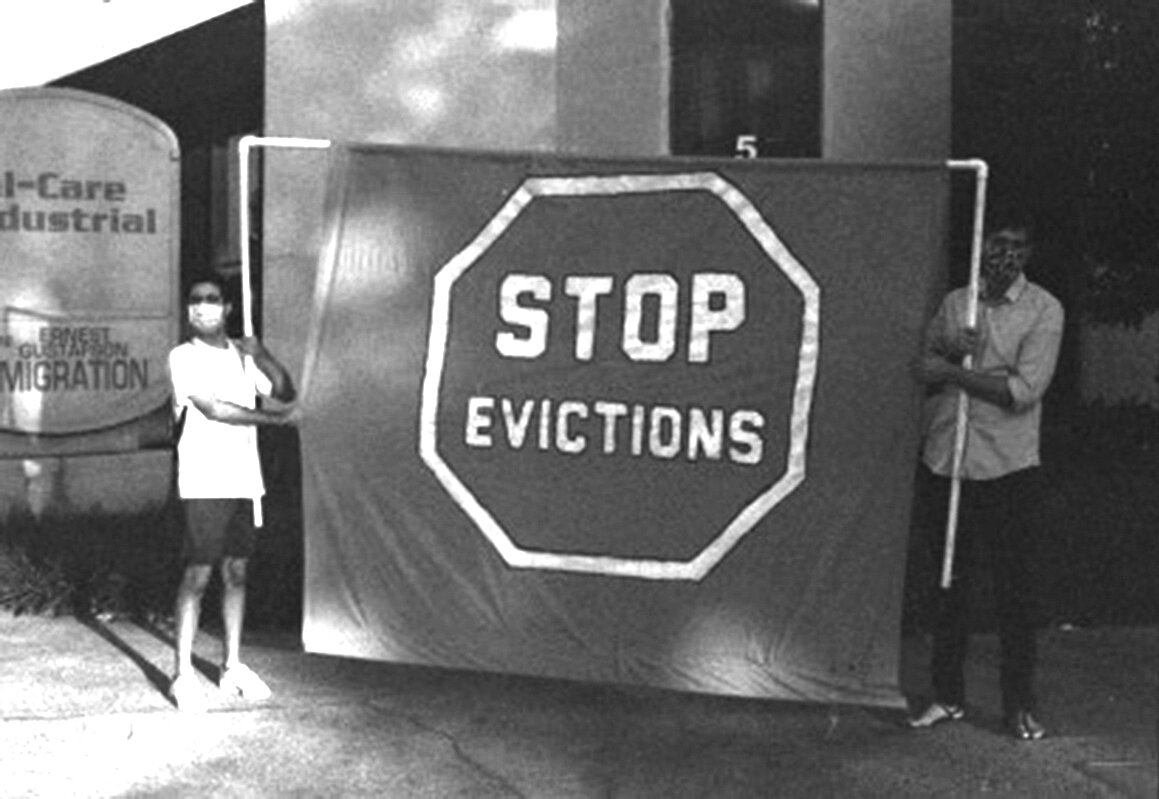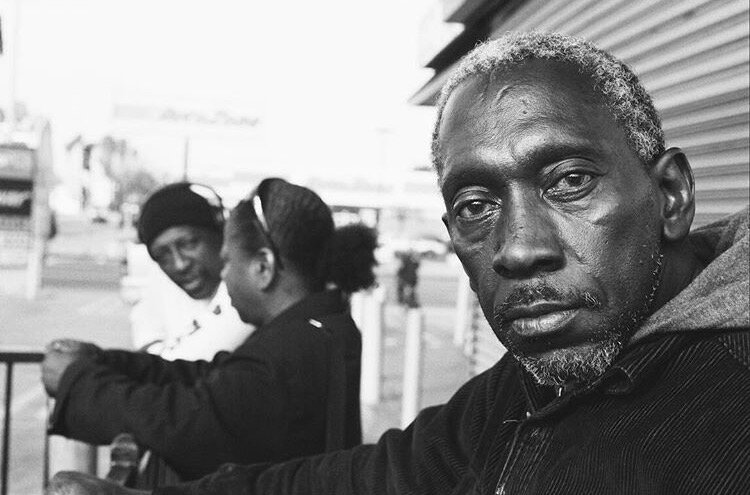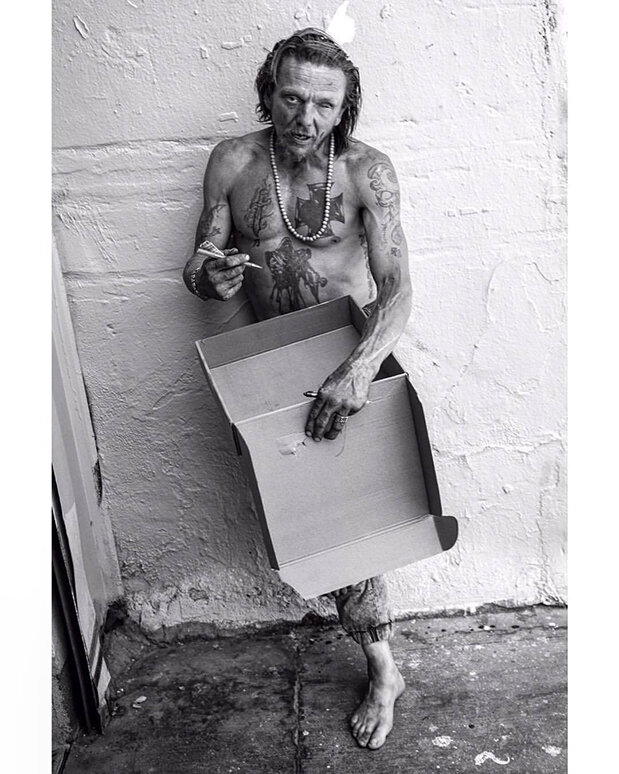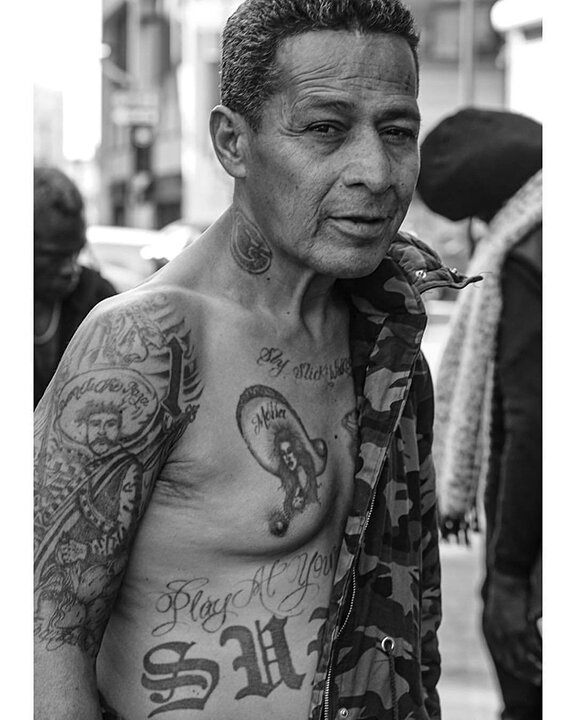When the last President criticized critical race theory and threatened to “extinguish” controversial diversity training and defunding institutions, showed evidence teaching this philosophy.."
"Affordable Housing" is it Only a Buzzword Used to Manipulate the People?
Illustration Aleutie
Text by Julian Lucas
I came across an interesting post on social media about a virtual zoom conversation. The question posed was, ”How can we make housing more affordable?”
To answer this question, we need to look at the statistics and consider our present-day circumstance.
The city of Los Angeles has been obtaining real estate for the last 240 years since the city was founded in 1781. In the state of California, public-owned properties amount to almost 9,000 properties, which include undeveloped land as well as mixed-use, commercial, residential single-family and multi-family land. In 2018, there were over 7000 publicly owned buildings, which largely appear to remain vacant.
There are other statistics to factor into the discussion. According to Curbed LA, in 2015, 58.5 percent of people in Los Angeles are paying more than what is considered an “affordable” amount—meaning that more than 30 percent of their income goes toward their housing. So lets face it, Los Angeles is an unaffordable place to live.
In the era of Covid-19, many are losing or have lost their jobs. Even though minimum wage has gone up to $15 an hour, will that be a sustainable amount of money to afford a 1-bedroom apartment with an average rental rate of $1500 per month? Probably not when food, utilities, and other expenses are factored in.
HISTORY AND THE DISCONNECTION
If we stop for a moment and take a look at history, there was a time when people could live within their means, when apartments were affordable for people who didn’t make much money. Fast-forward to the present day, the middle class is now occupying those apartments and the people who don’t make much money are now homeless.
Will the market solve that? The housing market won’t ever solve that, no matter how much housing you build. And many city leaders, and city leader advocates seem to be disconnected from both the equation and the fact that people are living in a place that someone else is trying to make a profit.
Can we add capitalism in that equation? Of course! And with capitalism there is racism and classism. There is a disconnection when the community fails to see the difference between community improvement and gentrification. Community cleanups don't cost the city money because the community volunteers to do so. It is often true that the community takes part in their own displacement because they fail to realize that they lack protections when the cost for rentals goes up after they have planted the trees and improved their neighborhood.
Is Non-Discriminatory Public Housing the Solution to Counter Gentrification?
We have to understand gentrification creates a level system. When rent rises, the individual, family, or families move down the ladder of economic stability.
A solution to the problem is simple - non-discriminatory public housing. But leadership usually deems this solution impossible or too expensive. Section 8, the federal housing voucher program, is also a solution, however, section 8 has a failure rate, because it is difficult to locate a place that accepts a Section 8 voucher. However, if we allocate more land that is both publicly and privately owned for more public housing with rent-control, we could house more in need. This is an alternative to funding shelters.
Spike Lee’s “Do Right Thing” , 1989 Gentrification Rant
RACE & CLASS
In the US, race and class have been defined by redlining. Historically, class was created on racial lines and most of the gentrifiers are white. We have to figure how we protect not only lower classes of people, but a diversity of races.
The problem at present is acute when you consider the problem from the supply point of view. When the construction of new buildings on vacant lots, with an average price of a house takes double the income than the average person in Los Angeles County.
Building more housing, with the mindset of prices going down or reaching a state of plateau is not how housing works. Landlords market their apartments to make profit, and with market forces at work, this is not a pathway to make apartments affordable for middle, low income and very low-income people.
As you are reading this, many of you will have come to the conclusion that I am against development. I’m not. Actually, it's the opposite, I am all for development as long as it benefits everyone, but right now, I am seeing the everyday person adversely affected by the way development is presently conducted.
Links:
Curbed LA
Los Angeles Portfolio
Julian Lucas, is fine art photographer, photojournalist, and creative strategist. Julian also works as a housing specialist which, includes linking homeless veterans to housing. Julian has lived in Chicago, Inglewood, Portland, and the suburbs of Los Angeles County including Pomona.
HOUSING IS A HUMAN RIGHT!
Photography by Julian Lucas
Text by Julian Lucas
Earlier this month, the California Governor Gavin Newsom signed Assembly Bill 3088 into law, attempting to meet the needs of both property owners and activist groups who advocate for tenants. The extension set for five months targeted at stopping millions of residents from being thrown out of housing for losing rent due to difficulties caused by the coronavirus pandemic.
“FIGHT FIGHT FIGHT HOUSING IS A HUMAN RIGHT”! A dozen protesters stood at the corner of Mission Garey ave and Mission blvd on a hot evening chanting and breathing in the hazardous smoke filled air quality to protest rent control.
According to Yesenia Miranda Meza, co-founder and President of Pomona United for Stable Housing, “AB3088 it is not enough Community members, renters in general, can still be evicted and rents can still increase. The city of Pomona has the ability to pass an ordinance in order to stop rent increases”.
For the last three years, PUSH has been requesting the Pomona City Council to pass an ordinance that would stop rent increases, in addition to passing a rent stabilization ordinance. However, “the city council has not moved in that direction”, says Meza. “Council has only met with PUSH once accompanied by a consultant, but has not followed up”. Members of PUSH have been attempting to protect renters from the rise in rents with continuous fighting due to Covid-19 and some of the gentrification that is currently taking place. PUSH feels that once the Gold Line is built, gentrification will claim its stake and members of the community who have lived here for decades will be priced out and displaced.
Meza explains, “Not that we don’t want our city to evolve and thrive, we want that. However, we want to stabilize the people that are here in order for the people that have been here to enjoy and be a part of the change.
Julian Lucas, is fine art photographer, photojournalist, and creative strategist. Julian also works as a housing specialist which, includes linking homeless veterans to housing. Julian has lived in Chicago, Inglewood, Portland, and the suburbs of Los Angeles County including Pomona.
RACISM & HOMELESSNESS
“Bone” had been homeless for about 2 years and just lost his wife. He had thought about moving from Los Angeles but hadn’t made up his mind yet. “Life is difficult especially if your black, this place wasn’t made for us”.
Photography by Julian Lucas Los Angeles, 2014
Text & Photography by Julian Lucas
Researching the issue of homelessness has been discouraging, to say the least. In my investigation of the many strategic plans for civic action, I have found that there is rarely mention of racial equity as the key contributing factor. Cities who struggle with homelessness should agree to begin having conversations about race and racism. Only at this point can we begin to tackle the homeless issue in good faith and face to face. If we continue to suppress and try to bury racism by using language such as diversity or “cultural competency training”, or phrases such as “health disparities,” without acknowledging racism then we’re not seeking the root cause beneath the surface of homelessness. There is a serious need to be able to simply talk about how to talk about racism. Let me give you an example of what I mean. Among the several strategic plans I researched, I happened to have researched The City of Seattle's Strategic Plan. Racial equity was the first thing that was documented within their plan. How is it that a citywith only a 3.7% African American population can have a Strategic Plan that addresses racial equity as fundamental to theirplan to address homelessness?
Lesar Development Consultants, who’s website states “Our Mission is to End the Housing Affordability Crisis and Homelessness,”was awarded the contract to assist the City of Pomona with a comprehensive analysis and solutions for combating homelessness. The final plan, called “The City of Pomona Enhanced Strategic Plan to Prevent and Combat Homelessness” was completed July 2018. In reading through this finished document, I came across the section which deals with the homeless titled, “Lived Experience”. section of the website. As I scrolled down and stumbled across a graph that showed there is 28% of African Americans that are homeless in the city of Pomona. Yet, there are only 6% African Americans that reside in the city. My questions are why aren’t we asking the question of “why” is there such an over-representation of African American homeless people living in Pomona. I would think digging beneath the surface of this outsized disparity would be an obvious question to ask. We know should all know African Americans only make up 6% of the population in the city of Pomona. We should also know whites make up 53% of the homeless population which is not far off from Pomona’s residency of 48% white.
Additionally, while searching LeSar Development Consultants website noted that under the heading entitled, Team they provide profiles of their “strategic advisors and technical experts, but notice that the ethnic makeup of the"team" does not represent the populations being served. The disparity is clearly evident in the Lived Experienced page in the completed Pomona study as well. Along the same vein, an article posted about ways to “increase housing affordability and end homelessness” which I found on the LeSar Development Consultants webpage entitled, “Getting Smart About Equity” spoke about the need to end homelessness through equity in home ownership. It stressed the need to put “aside long-held assumptions” and “pivot toward a more nuanced understanding of issues” and offered five research tips for building equity. Sadly, not one of these “tips” addresses the issue of race and racism within the context of homelessness.
Jerry was a 1981 graduate of Ganesha High School in Pomona and has been living on Skid Row for quite some time. Jerry expressed thatit was rather difficult to make it in society because people pre-judge him before getting to know him, adding that “the world can be cruel.”
Despite his facial injury, which was caused by an incident ofrandom gun violence ashe waited ata bus stop over 14 years ago, Jerry isa great conversationalist. Hewas incredibly open about his life and hisstruggles with his physical ailments which are worrisome as Jerry cannot see well out of his remaining left eye.
Photography by Julian Lucas Los Angeles, 2019
POLICING THE HOMELESS & THE WORD “SOLVE”
When cities begin the inclusion and deployment of officers as a part of the Homeless outreach services, I see the same heavy-handed practice of policing with its emphasis on dehumanizing people who are caught in homelessness instead of simply focusing on housing and supportive services. This approach seems to be politically driven with targeted strategies towards criminalization versus simply camp dispersing tactics. One has to ask, are policymakers only looking at homeless through the lens of one’s own eyes and not through the perspective of those who actually live this reality on a daily basis? The fact is housing is out of reach for many. Those of us who work paycheck to paycheck are just barely able to make the rent.
We must also have to understand that homelessness is a structural problem, not an individual. This is not an issue of human volition, the homeless do not decide and then commit to a path of homelessness. History reveals that throughout time we humans have always created conditions of homelessness. Today is no different. We have created affordable housing, only to have it taken away by the manipulations of deregulation of the housing market and the removal of federal money from housing subsidies for low-income folks. Yet we attempt to “solve” homelessness on an individual level, completely ignoring the imbedded structural basis and expect that to be a fix. I have seen forced use of shelters and more criminalization, people hating on social media and blaming homeless folks for the city’s problems. Redirected resources and subsidized housing is the only solution. Having a shelter and trying to fill beds won’t “solve” homelessness no matter the number of beds. Where is the collaboration with social movements and service entities? I did not see one of these as a part of Pomona’s Strategic Plan.
Photography by Julian Lucas Los Angeles, 2010
Back in June The LA Times published an article entitled, Racism is the reason Black people are disproportionately homeless in L.A., report shows. The article stated,
“According to a draft report, 21,509 Black people were without permanent, habitable housing during the count in January — 34% of Los Angeles’ homeless population of 64,000 (Pasadena, Long Beach and Glendale do their own counts, bringing the county homeless total to 66,000). “The Black share of homelessness has hovered for years around that percentage point, in a county where only 8% of residents are African American”.
The article also mentioned after a draft report was conducted it was found that 16,000 people who were homeless were white while 23,000 people were Latino, and the likelihood for Black people to become homeless is 10 times greater than for white people. My question is why aren’t we having conversations surrounding these types of issues, instead of the usual social media hatred for homelessness? The usual name calling words such as “tweekers”, “squatters”, and the word I dislike the most, “vagrants” which in our history is a label that was given to freed slaves.
In terms of racism in homelessness unfortunately we won’t see an end to homelessness until we acknowledge racial inequity.
Julian Lucas with Pepper the “Mayor of Skid Row” 2016
REFERENCES
https://lesardevelopment.com/about/
https://lesardevelopment.com/getting-smart-about-equity/
Julian Lucas, is fine art photographer, photojournalist, and creative strategist. Julian also works as a housing specialist which, includes linking homeless veterans to housing. Julian has lived in Chicago, Inglewood, Portland, and the suburbs of Los Angeles County including Pomona.
SUITCASE JOE GOES WELL BELOW THE SURFACE OF HOMELESSNESS TO CAPTURE THE MOST STRIKING AND INTRIGUING IMAGES AND STORIES
Interview by Julian Lucas
Photography Suitcase Joe
With about many people living in Los Angeles County without a home, it makes many people wonder what solutions there are to solve this state of emergency.
Skid Row, a district within the city of Los Angeles, is home to around 4,757 people living in homelessness, according to the 2019 census, an 11 per cent increase from the previous year. This can be described as the population accounts for approximately 13 per cent of the 36,135 homeless within the city limits. The county has almost 59,000 homeless people.
Suitcase Joe, an anonymous street photographer who has been documenting and telling the stories of the Skid Row community. For the last 5 years, Suitcase Joe has spent countless hours meeting the residents of Skid Row Street to learn their stories so that he could share them with the outside world. “My mission is to re-humanize the wonderful people who make up Skid Row and give them a platform to be heard by all”. Suitcase Joe feels it is easier to help people and to take care of them if you have a better understanding of where they're coming from.
“I was floating off the ground from all the electricity running through me, then it blasted me right out the window, forty feet through the air, all the way to the sidewalk on the other side of the street. When I woke up I smelled something burning. Then I realized it was me. I was on fire!” Cricket recounts his story of how he earned his scars. He tells me he used to be a “fence jumper”, going into old buildings and pulling copper to sell. He went into a master room in an abandoned warehouse and grabbed a big ground wire while holding his wrench. “There was so much electricity in there, that the room was humming. You could just feel it. Next thing I know I’m floating off the ground and seeing neon green. Then my eyes flashed twice and I was out.” After being blasted out the window and catching on fire, he woke up again, long enough to try and put himself out, and then passed back out. Two months later he woke up in a hospital bed. He tells me the entire time he was in a coma he was having one long dream where doctors performed experiments on him, but he was still in Skid Row. Cricket lives in Skid Row currently, but he’s not a fence jumper anymore. Now he sells and trades goods on the streets like bikes and clothes. As he says, far less dangerous pursuits.
The woman on the left brought news that a man around the corner known as New York had just passed away in his tent. That’s how word travels in Skid Row. Fortunately it wasn’t anyone that Tiffany knew. Tiffany (photo right) is a heroin addict. While I was speaking with her, I noticed blood on her shirt and a bloody cloth wrapped around her arm that served as a crude bandage. She tells me, two years ago a couple of abscess’ formed on her arm caused by shooting up and they quickly became infected. The infection continued to grow and spread throughout her entire arm. From my observation her arm cannot be far off from needing to be amputated. However, the state of her arm does not keep her from continuing to use. Addiction is more powerful than some people understand. It’s not as easy as just getting clean and starting over. It’s something you will always have to deal with once it rears its ugly head into your life.
It’s a little after 8 a.m in Skid Row and the streets are coming to life. Here a man shoots up in his neck while smoking a blunt. Not long before this photo was taken, a man across the street was ODing from an unidentified drug. I called 911 while a woman who had rushed to the scene, performed CPR on the man. She had an OD kit with her too, which is something I had never seen before. Medics were quick to arrive and take over. I did not get a chance to speak with the woman afterwards, who returned to work as fast as she had arrived to help out. People OD everyday in Skid Row. It’s a sad reality of what’s happening down here and it’s all too common to see if you’re here everyday. I don’t know if the man survived. Sadly, it’s just another day in Skid Row
A woman with presumably mental health issues running naked through the streets of Skid Row while paramedics do what they can to try and pick her up.
Diamond, seen here putting on makeup, is a very artistic woman. She lives on the sidewalk of a garment factory business where she has built an elaborate two room shack. The ceilings are draped with an assortment of scarf like fabrics and inside she burns fires in a grill at night to keep warm. There is even a queen size mattress and sofa inside. Because her dwelling is on the sidewalk of a business that lets her live there, she’s not subjected to street cleaning and she’s built something a little more long term than the tents you normally see in Skid Row. She was addicted to crack cocaine for many years, and before that she was a model. She tells me she does a little work for a few of the local businesses now, and that helps her get by.
For more intriguing imagery follow Suitcase Joe
instagram
tumblr
twitter
Julian Lucas, is fine art photographer, photojournalist, and creative strategist. Julian also works as a housing specialist which, includes linking homeless veterans to housing. Julian has lived in Chicago, Inglewood, Portland, and the suburbs of Los Angeles County including Pomona.




















